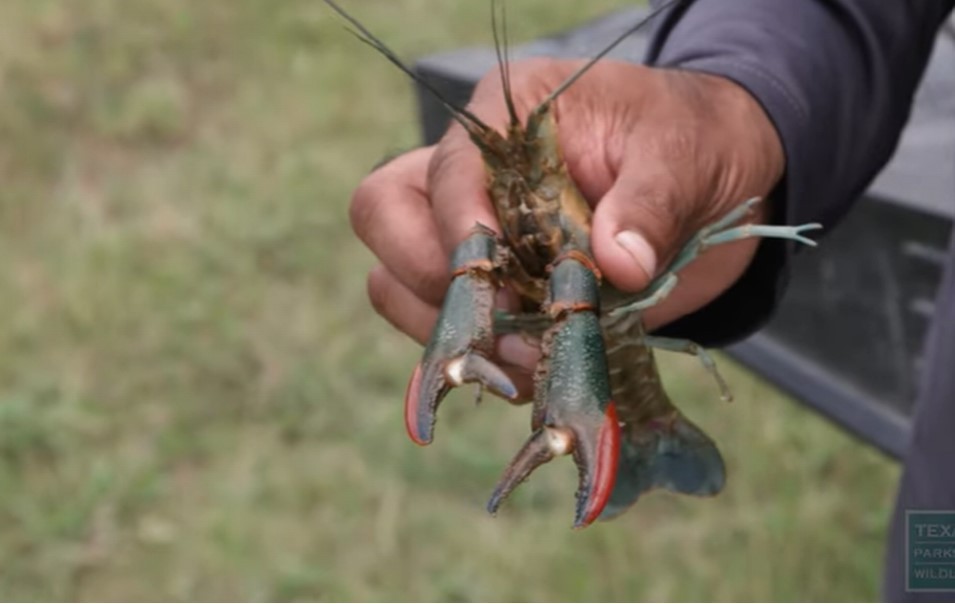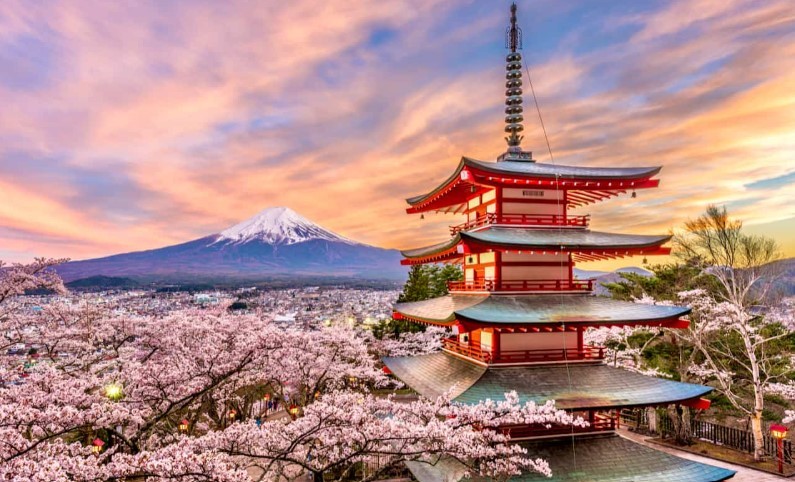Facts About Texas - The Second Biggest State In America
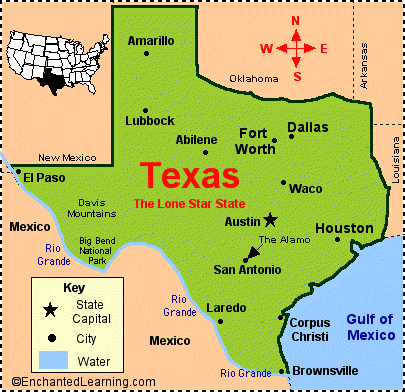 |
| Texas - The Second Biggest State In America |
What is the biggest state in the US?
Sold by Russia to the US in 1867 and having gained official state status on January 3, 1959, Alaska is the largest US state. Stretching for 665,384.04 square miles, it is embraced by the Beaufort Sea and the Arctic Ocean to the north, the Gulf of Alaska and the Pacific Ocean to the south, the Bering Strait and the Bering Sea to the west, and the Chukchi Sea to the northwest. Its capital, Juneau, is located in the long-stretching southern portion of the state, with the British Columbian border just 40 miles to the east, and less than 120 miles to the Yukon border in the north.
Only 40% the size of Alaska, Texas is the second-largest state in the United States by both land area and population. It is located in the south-central region of the country with Mexico and the Gulf of Mexico along its southern border. Texas, a constituent state of the United States of America, became the 28th state of the union in 1845. Texas occupies the south-central segment of the country and is the largest state in area except for Alaska. The state extends nearly 1,000 miles (1,600 km) from north to south and about the same distance from east to west.
Where is Texas on the map?
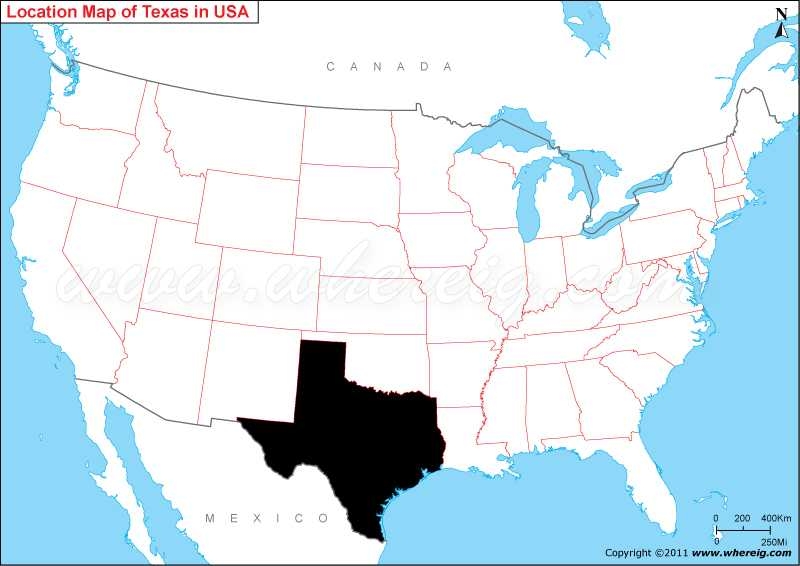 |
| Photo: whereig |
Texas map also illustrates that it shares its border with Oklahoma in the north, New Mexico in the west, Louisiana in the east, and Arkansas in the northeast. Besides, it also shares an international border with Mexico in the south and the coastline along the Mexico Gulf.
Surprisingly, the second largest state of the United States Texas has the maximum number of counties i.e. 254, more than any other state of the United States. Due to the vast area, the climate type of state also varies greatly i.e. from cold to semi-arid and arid.
The capital city of Texas is Austin but the other larger and significant cities are Houston, San Antonio, and Dallas. However, Texas has four metropolitan areas - Dallas-Fort Worth-Arlington, Houston-Sugar Land-Baytown, San Antonio-New Braunfels, and Austin-Round Rock-San Marcos.
History of Texas and origin of name Texas
People first came to the area that is now Texas at least 16,700 years ago. Thousands of years later Native American tribes, including the Akokisa, Karankawa, Mogollon, and Comanche, lived on the land.
Spanish settlers promoting Christianity, called missionaries, were some of the first Europeans to live in what is now Texas. In 1821 Mexico took control of the land, eventually calling the area Coahuila y Tejas. But in 1835 settlers living in this province—often just called Texas—rebelled, beginning the Texas Revolution. The rebels suffered a terrible defeat by the Mexican army at the 1836 battle at the Alamo, a mission in San Antonio. But the loss only inspired the settlers to fight on. With a cry of “Remember the Alamo!” many joined the rebel army, and soon Mexico gave up.
Texas became an independent nation called the Republic of Texas in 1836. But fending off hostile tribes and Mexican troops was difficult for a small country, and Texas joined the United States in 1845. In 1861 Texas left the Union and rejoined after the Civil War ended in 1870.
It’s said that the Caddo tribe greeted Spanish settlers by saying Tay-yas, which means “friends”—and sounds like “Texas.”
Texas is nicknamed the Lone Star State because in 1836 when the Republic of Texas declared itself an independent nation, it flew a flag with a single star on it.
Fast FactsState abbreviation/Postal code: Tex./TX Nickname: The Lone Star State Origin of name: From the Caddoan word for "ally," used to refer to the Spanish-allied Hasinai Confederacy and the area they lived in. Motto: Friendship Slogan: "The Friendly State" Land area:268,581sqmi(696,241 km2) Geographic center: In McCulloch Co., 15 mi. NE of Brady Number of counties:254 Largest county by population and area: Harris, 4,092,459 (2010); Brewster, 6,193 sq mi. State forests:5 (7,314 ac.) State parks/recreation areas: 115 (600,000+ ac.) |
Texas Geography and Landforms
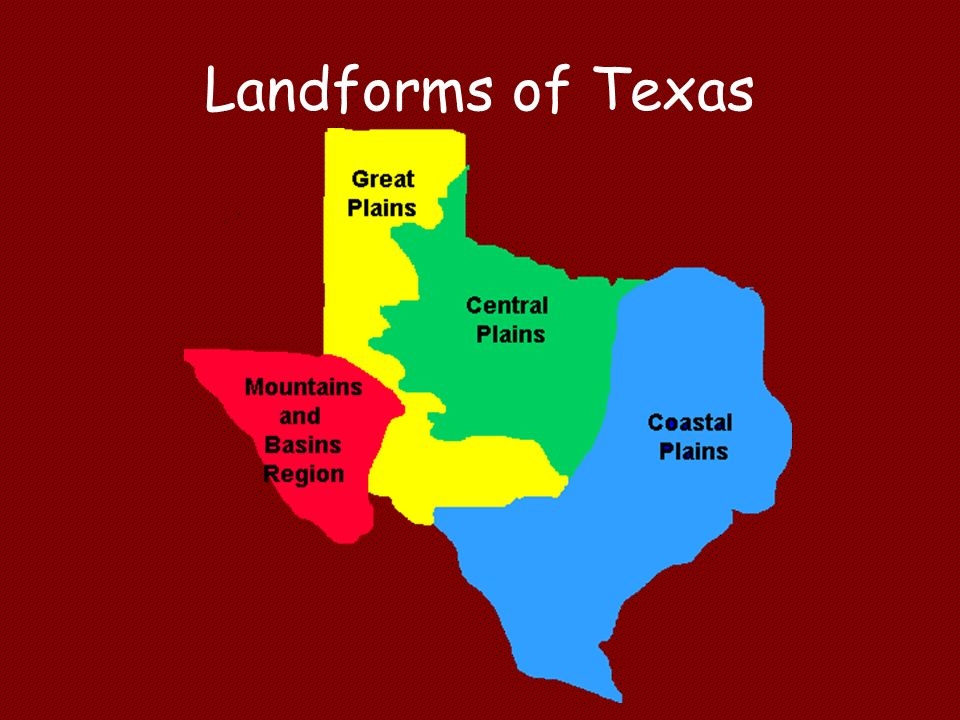 |
| Photo: slideplayer |
Texas is bordered by New Mexico in the northwest; Oklahoma in the north and northeast; Arkansas, Louisiana, and the Gulf of Mexico in the east; and Mexico in the southwest.
The hilly southern and eastern part of the state is called the Gulf Coastal Plains. It includes the Pine Belt, where most of Texas’ commercial timber grows. The Interior Lowlands cover the northeast and have some of the state’s biggest ranches. The Great Plains stretch across the north and west parts of the state and extend all the way to Canada. Far west is the Basin and Range Province, Texas’ only mountainous region. It’s bordered on the south by the Rio Grande, the river that marks the boundary between the United States and Mexico.
Texas Weather
In Texas, a large southern U.S. state, the climate is continental in the northwest, where we find a plateau, and subtropical in the rest of the state.
If the northwest is excluded, winter is mild, but short bursts of cold air are possible. In the plains, snowfalls are rare in the northern part (see Dallas) and very rare in the central-southern part.
Summer is very hot in the lowlands, and muggy especially in the eastern part and along the coast of the Gulf of Mexico, while it is drier in the west (and less hot at high altitudes).
As far as rainfall is concerned, the western part of Texas (see Amarillo, Lubbock, El Paso) is arid, while the eastern part (see Houston, Beaumont), where rainfall exceeds 1,200 mm (47 in) per year, is rainy. The central belt, where we find cities like Dallas, Austin, San Antonio, Corpus Christi, and were from 750 to 850 mm (29.5/33.5 in) of rainfall per year, is at an intermediate position, in fact, it can receive either dry air masses from the west or moist air masses from the east, and there can be dry as well as very rainy periods.
Texas is a sunny state. The sun shines all year round, especially in the western desert areas. In El Paso, in the far west, there are even 3,750 hours of sunshine per year, and in Amarillo, in the northwest, around 3,300. The least sunny area is the south-eastern one, around the Gulf of Mexico (see Austin, San Antonio, Houston), where it drops to 2,600 hours of sunshine per year, and the sun shines roughly half the time in winter and 3/4 of the time in summer.
In the center and north, in spring and early summer, generally from April to June, and more rarely in the fall, tornadoes may develop, due to the collision of air masses.
Texas is also exposed to the risk of hurricanes coming from the Gulf of Mexico. The areas most at risk are the coastal ones because hurricanes weaken when they penetrate inland, however, they can still bring abundant rainfall. The hurricane season runs from June to November, although they are more likely from August to October, with a peak in September. Sometimes, the remnants of a hurricane can also arrive from the Pacific, though weakened, but they can still bring abundant rains.
Texas Wildlife and Natural Resources
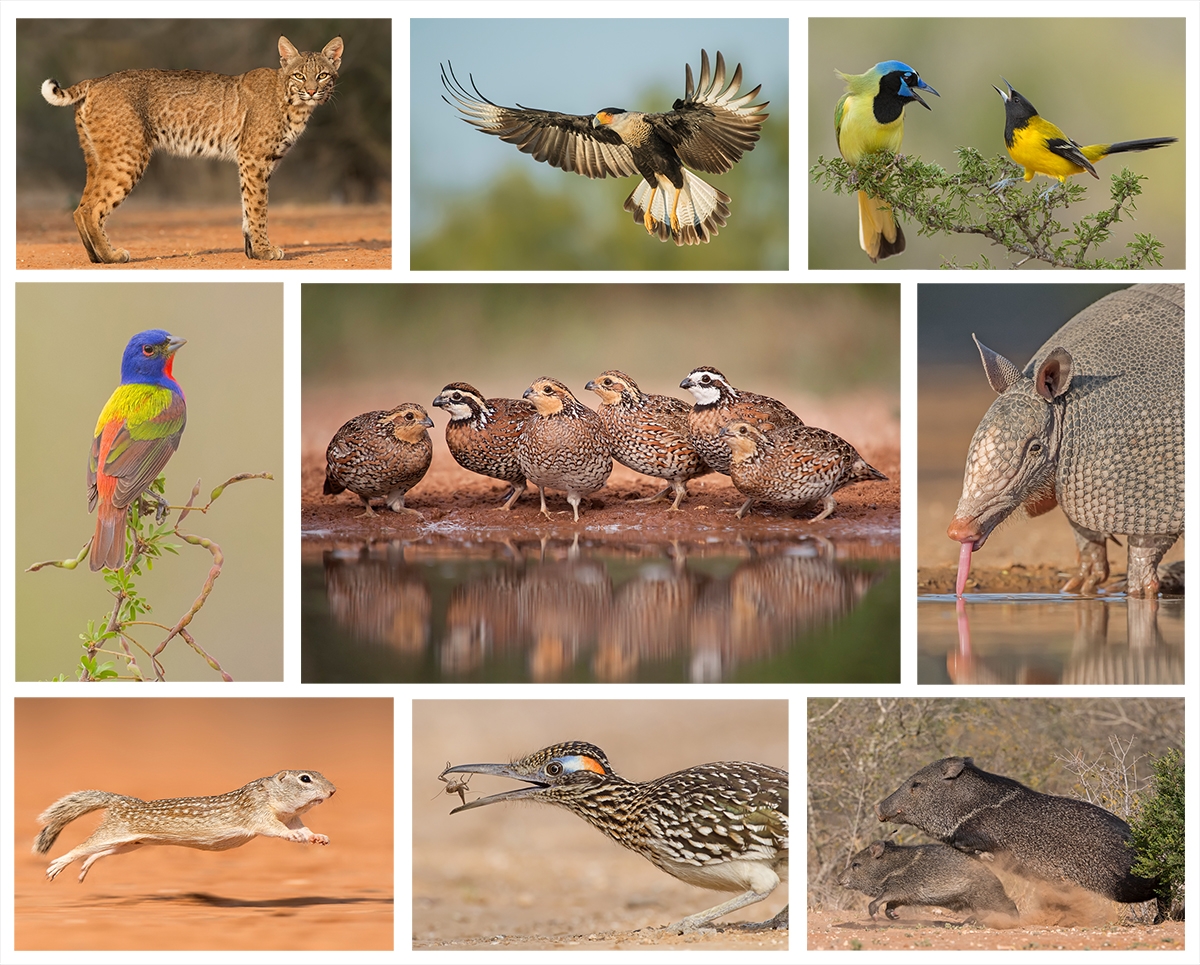 |
| Photo: hectorastorga |
Texas has many native animals and birds, as well as introduced species. More than 540 species of birds — about three-fourths of all different species found in the United States — have been identified in Texas.
Some 142 species of animals, including some that today are extremely rare, are found in Texas.
Most of the more than 100 species and subspecies of snakes found in Texas are beneficial, as also are other reptiles. There are 16 poisonous species and subspecies.
Venomous reptiles include three species of copperheads (southern, broad-banded, and Trans-Pecos); one kind of cottonmouth (western); 11 kinds of rattlesnakes (canebrake, western massasauga, desert massasauga, western pigmy, western diamondback, timber, banded rock, mottled rock, northern black-tailed, Mojave and prairie); and the Texas coral snake.
Also noteworthy is the horned lizard, also called a horned toad, which is on the list of threatened species; the vinegarone, a type of whip scorpion; tarantula, a hairy spider; and alligator.
Though you might have heard of Texas’ oil rigs—hundreds of them pump beneath the earth—the state is also famous for another natural resource: cattle. Texas has about 12 million cattle, more than any other state in the country. Texas also produces wool and cotton, and has one of the largest wind-power-producing farms in the world with more than 100,000 acres of wind turbines. At one point the turbines provided 45 percent of the state’s electricity needs.
Texas' Industry & Economy Facts
GDP: 1.7 trillion dollars (2ndin U.S., 2016)
Unemployment: 4.4% (2015)
Overview:Texas is one of the most developed economies in the country; only California has a larger GDP, and only New York and California have more Fortune 500 companies. Texas is the largest exporter of all states, and is a leading producer in all manner of agricultural products from cotton to cattle. Texas also has a large defense and tech industry, as well as aeronautics and filmmaking. The state of Texas alone would be the 10th largest economy in the world.
Texas Fun Stuff- Juneteenth, the federal holiday that celebrates freedom for enslaved people, started in Texas. - Frontiersman and politician Davy Crockett moved to Texas around 1835 and died while fighting at the Alamo. Two U.S. presidents were born in Texas: Dwight D. Eisenhower and Lyndon B. Johnson. Houston’s Johnson Space Center, also known as Mission Control, carries President Johnson’s name. - Because it’s so close to Mexico, Texans have developed a cuisine that’s a mix of Mexican food and American cooking called Tex-Mex. - Want to feel like a cowboy? Visit one of Texas’s thousands of ranches and rodeos. - Six flags have flown over Texas: British, French, Mexican, Texan, United States, and Confederate. That’s how Six Flags amusement park got its name! |
Texas Culture and Interesting Facts
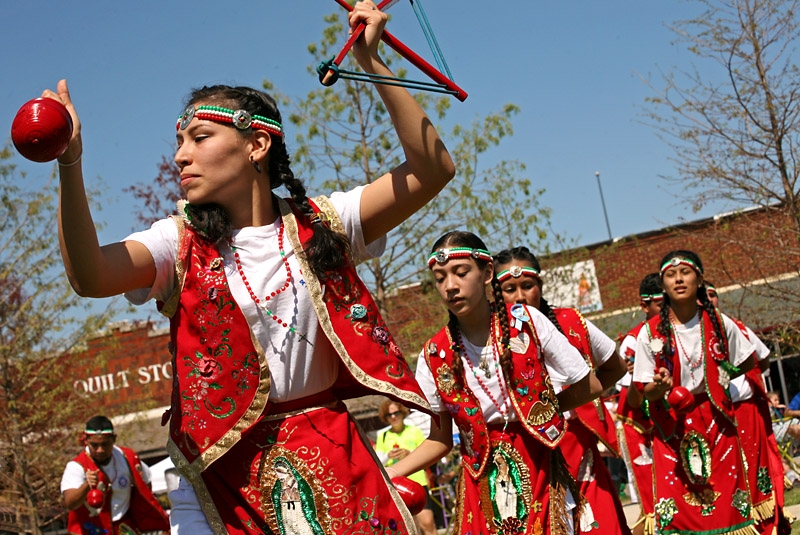 |
| Photo: texasculture |
The Lone Star State
Texas is famous for its sense of local identity and its independence. The Lone Star State puts a premium on its unique history and traditions. The amusement park Six Flags comes from Texas, named after the six flags that have flown over Texas? Spain, France, Mexico, theRepublic of Texas, theUnited States of America, and the confederate States of America. The outline of Texas is popular on consumer goods like belt buckles and waffle irons. In the last several decades, the environmental slogan "Don't Mess with Texas" has become a slogan for Texan pride. And, more so than in any other state, there remains today a notable movement for Texas independence from the United States.
Live Music Capital of the World
Austin, Texas is well-known for its slogan "the Live Music Capital of the World." Austin has more live concerts per capita than any other city in the United States. Estimates say that on a given night in Austin there are 100 live music performances, spanning a wide range of genres. Austin's music history stretches back to the 1800s, but it really took off in the 1960s. The city opened several large venues and cultivated an alternative country music scene from the more conventional musicians centered around Nashville. Today the city has major scenes for folk, country, jazz, Tejano, zydeco, punk, and indie music.
Ranching in Texas
The cowboy is widely seen as iconic of Texas. While Old West cowboys aren't common in Texas today, it is still the ranching capital of the United States. Texas is the top wool producer in the country, and also has massive herds of cattle. King Ranch in Texas is larger than the state of Rhode Island and houses over 35,000 cattle. The ranching culture extends into other areas of Texas life, influencing fashion and entertainment? rodeo, a sport that tests various ranching skills like roping cattle and riding bucking animals, is the official state sport of Texas.
Texas Food
From TexMex to barbecue, food in Texas is incredibly varied and irresistibly delicious.
The best things to eat in Texas generally involve big flavors and bigger portion sizes, and tend to be so tasty that you finish every bite in spite of yourself.
Most of these Texas foods aren’t exclusive to Texas, of course–many of them weren’t even invented here–but they are cherished parts of modern Texas culture.
Influences in Texas cuisine include Germany, Louisiana, the Czech Republic, and–of course–Mexico, all adapted by (some might claim improved by) the Lone Star State.
Tex-Mex CuisinePerhaps Texas's biggest cultural export to the rest of the country is its food. Tex-Mex food originates with the state's large Mexican-American population (also known as Tejanos), especially along the southern border with Mexico. Tex-Mex cuisine, like northern Mexican cuisine, is a fusion of Spanish food with local native food traditions, often using ingredients related to the ranching industry. After the 1960s, Tex-Mex became more Americanized with ingredients like yellow cheese and started becoming more popular throughout the country. Today, Mexican food (largely Americanized Tex-Mex) generates more than $40 billion per year in the U.S. |
Best Destinations In Texas
San Antonio
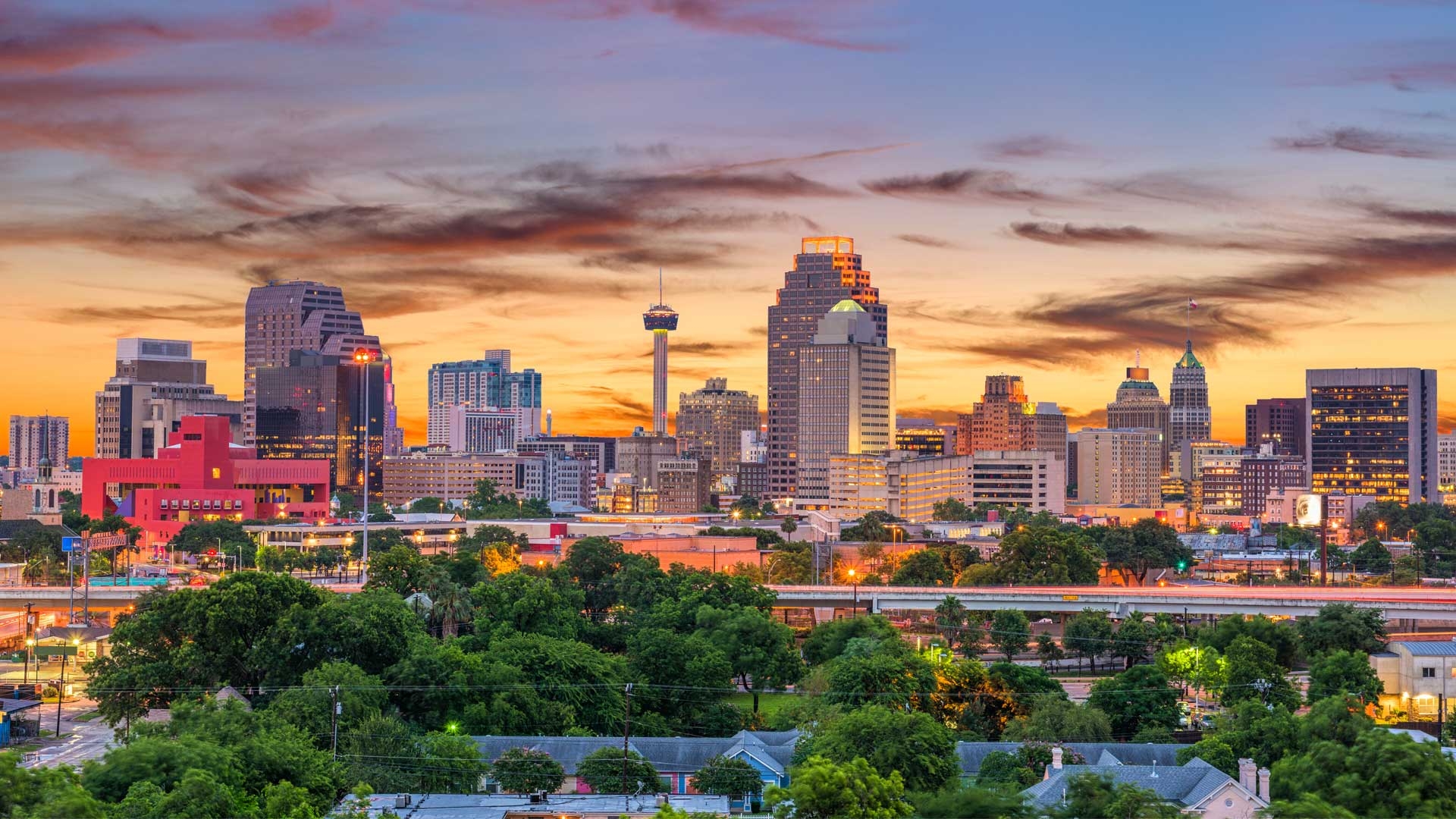 |
| Photo: aaevietnam |
Historical relics like The Alamo are no doubt San Antonio's biggest draw. However, you don't need to be a history buff to enjoy all the city has to offer. The River Walk makes for a soothing stroll along the San Antonio River, while expansive Brackenridge Park offers a variety of attractions and amenities. Active travelers can practice their swings at the park's golf course and ball fields, nature lovers can pass the time in its stunning gardens and families can get an up-close look at the on-site San Antonio Zoo's animals.
Big Bend National Park
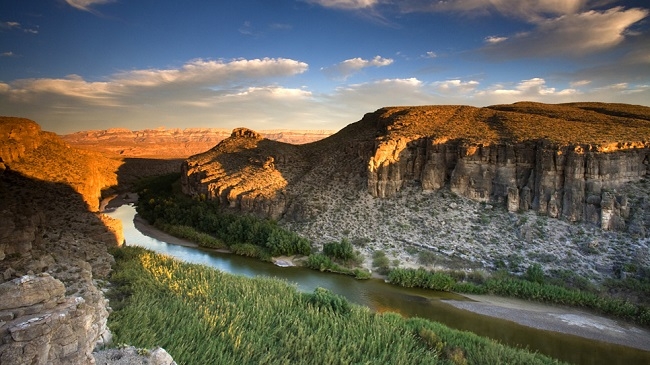 |
| Photo: national-park |
Every year, roughly 450,000 people visit this national park along the U.S.-Mexico border to spend some time outdoors. Big Bend National Park features hundreds of miles of paved and dirt roads for scenic drives, as well as 150-plus miles of hiking trails. While exploring the park's sections of the Chihuahuan Desert, the Chisos Mountains and the Rio Grande, keep your eyes peeled for birds. Big Bend is home to more than 450 bird species, including several kinds of woodpeckers and hummingbirds.
Austin
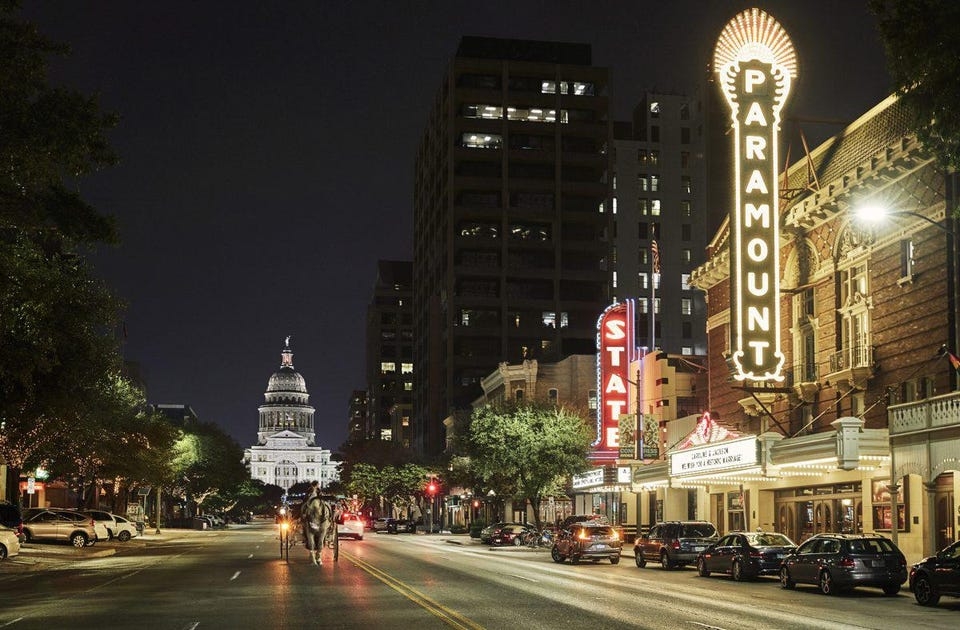 |
| Photo: forbes |
The capital city's colorful character takes Texas to an entirely new level. Austin offers loads in the way of culture, cuisine and natural scenery. While here, expect to enjoy unique outdoor areas like Zilker Metropolitan Park (where you'll find the natural Barton Springs Pool), various museums and plenty of delectable barbecues. The best way to soak up Austin's contagious energy is to visit Sixth Street. This music hub is packed with bars, restaurants and live music venues that have helped Austin earn its "Live Music Capital of the World" moniker.
Houston
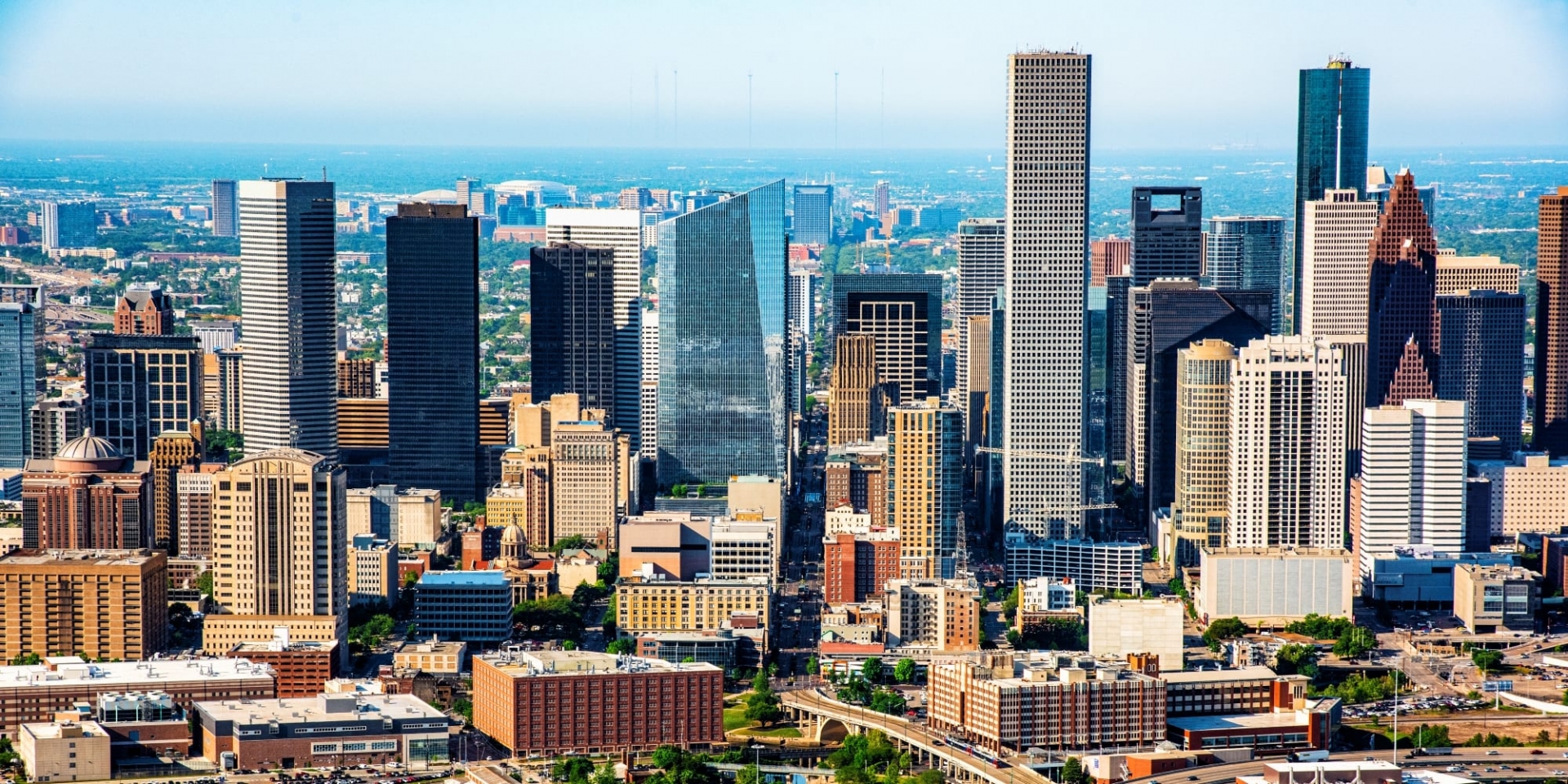 |
| Photo: mission |
Renowned as one of America's top barbecue destinations, Houston offers travelers a finger-licking good time. But did you know Houston is also a cultural hub? Within the urban sprawl, visitors can check out museums galore, from NASA's impressive Johnson Space Center to the quirky Art Car Museum. Many of the city's restaurants and shops are also covered in Instagram-worthy murals. Plus, with the world-class Houston Zoo, verdant Buffalo Bayou Park and a children's museum, Houston is an ideal (and affordable) vacation spot for families
South Padre Island
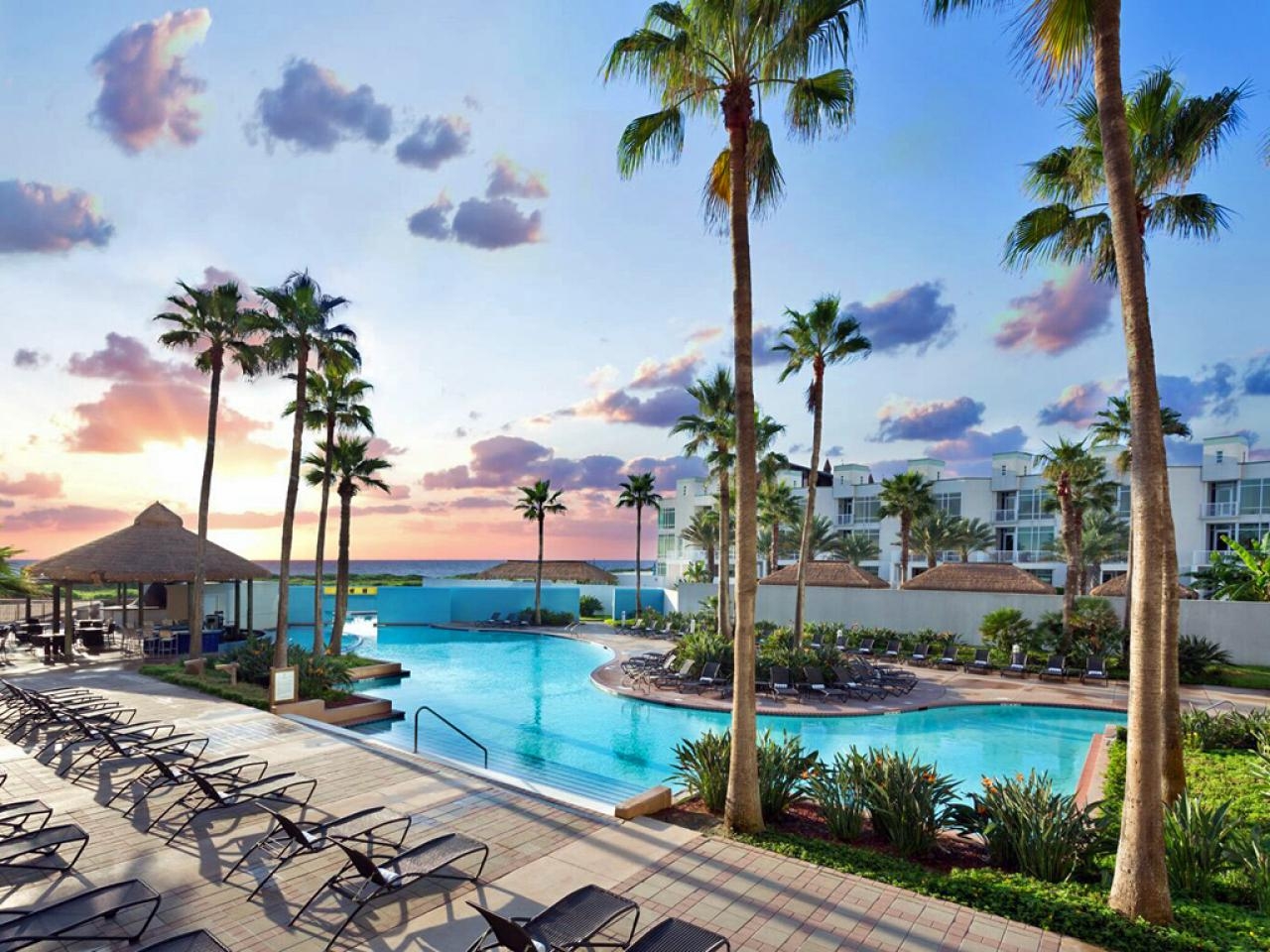 |
| Photo: travelchannel |
Believe it or not, Texas is home to some prime shorelines, and South Padre Island is considered one of the best. South Padre offers 34 miles of relaxing beaches along the warm waters of the Gulf of Mexico. While the island has a reputation for being a prime party spot for spring breakers, the rest of the year it's favored by families thanks to its affordability and bevy of kid-friendly attractions. Head to Sea Turtle, Inc. to learn about local sea turtle rehabilitation efforts, or visit Beach Park at Isla Blanca to cool off on a hot day.
Best ways to visit texasBy PlaneOverseas visitors can take advantage of the APEX (Advance Purchase Excursion) reductions offered by all major U.S. and European carriers. In addition, some large airlines offer transatlantic or transpacific passengers special discount tickets under the name Visit USA, which allows mostly one-way travel from one U.S. destination to another at very low prices. Unavailable in the U.S., these discount tickets must be purchased abroad in conjunction with your international fare. This system is the easiest, fastest, cheapest way to see the country. By CarIf you're visiting from abroad and plan to rent a car in the United States, keep in mind that foreign driver's licenses are usually recognized in the U.S., but you should get an international one if your home license is not in English. Driving is an excellent way to see Texas in small chunks -- roads are well maintained and well marked, and a car is often the most economical and convenient way to get somewhere; in fact, if you plan to explore beyond the cities -- which we highly recommend -- it's practically the only way to get to some places. Traffic in major cities, such as Houston, Dallas, and Austin, can be very congested and frustrating, especially at rush hour, and distances are often great. Be sure to leave extra time to get places. Away from the cities, you'll often find the roads to be practically deserted. By TrainMore than a dozen towns and cities in Texas are linked by rail, with most daily service from Amtrak. International visitors can buy a USA Rail Pass, good for 15 or 30 days of unlimited travel on Amtrak (tel. 800/USA-RAIL [872-7245]; www.amtrak.com). The pass is available online or through many overseas travel agents. See Amtrak's website for the cost of travel within the western, eastern, or northwestern United States. Reservations are generally required and should be made as early as possible. Regional rail passes are also available. By BusBus travel is often the most economical form of public transit for short hops between U.S. cities, but it's certainly not an option for everyone (particularly when Amtrak, which is far more luxurious, offers similar rates). Greyhound (tel. 800/231-2222; www.greyhound.com) is the sole nationwide bus line. International visitors can obtain information about the Greyhound North American Discovery Pass. The pass can be obtained from foreign travel agents or through www.discoverypass.com for unlimited travel and stopovers in the U.S. and Canada. |
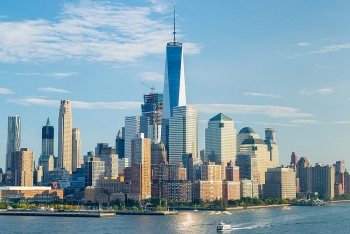 Facts About 'One World Trade Center' - The Tallest Building in America Facts About 'One World Trade Center' - The Tallest Building in America Many of America's tallest skyscrapers have been built in the past five years — such as the Wilshire-Grand Center in Los Angeles or Chase Tower ... |
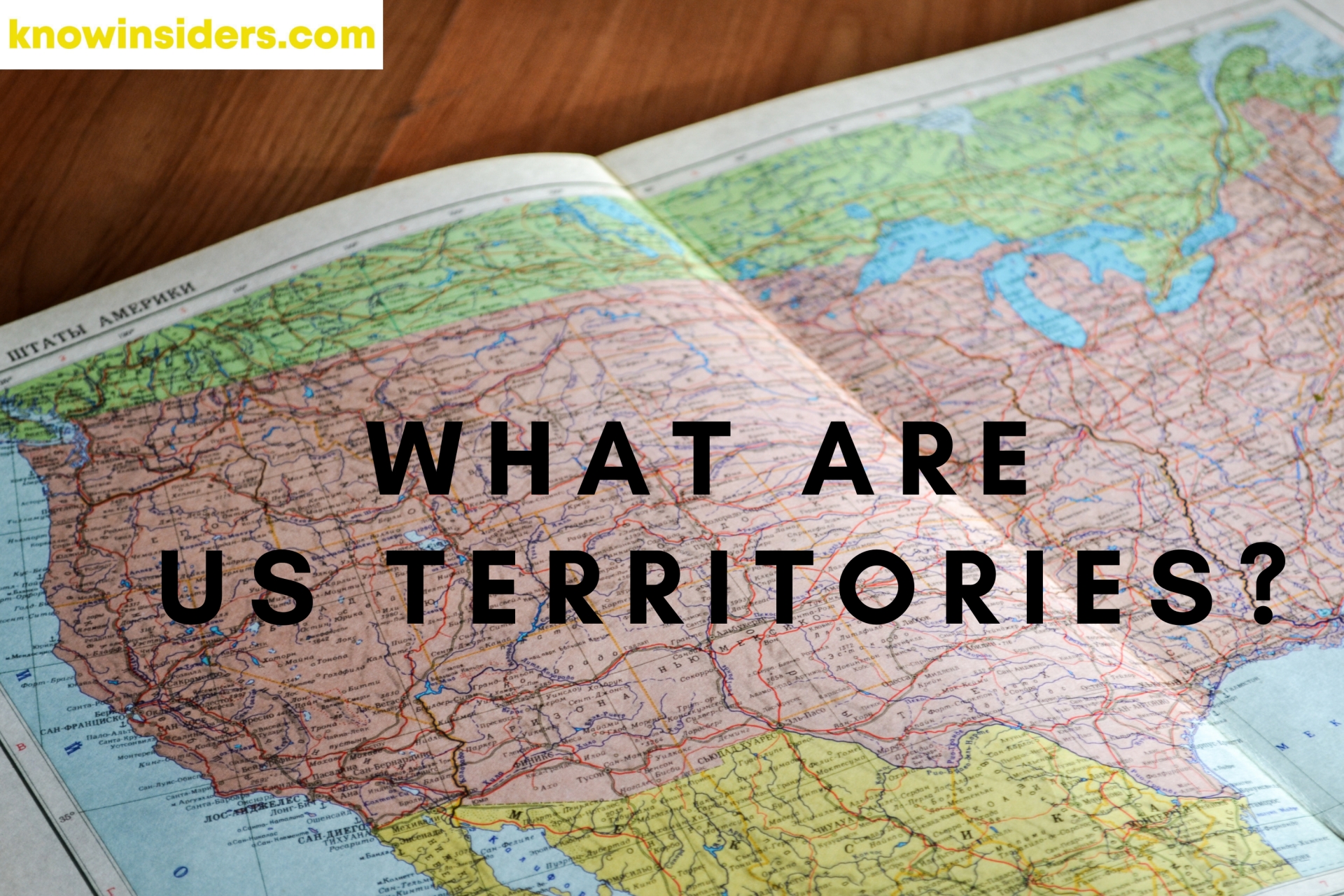 Facts About 16 US Territories Around The World Facts About 16 US Territories Around The World Do you know how many territories that the US has? Read on to equip yourself with more geography knowledge. |
 Why Isn't There A King Of England and Facts About The Queen Why Isn't There A King Of England and Facts About The Queen Learning about British Royal Family’s history, you will find a lot of interesting stories. One of them is there is no King of England. The ... |

